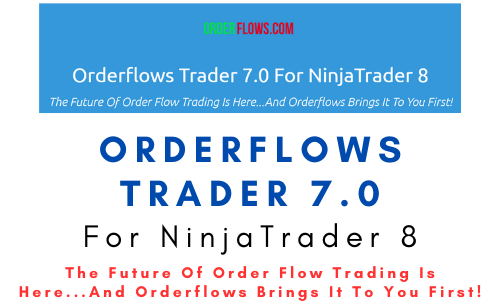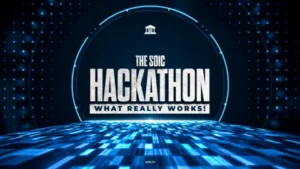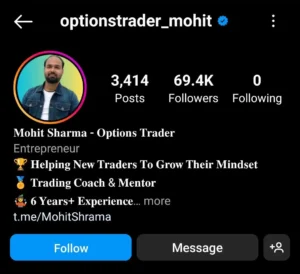Description
Orderflows Trader 7.0 For NinjaTrader 8
I created Orderflows software which runs on the Ninjatrader platform and combines charting and order flow in a dynamic, real-time way that allows the trader to view the market’s evolving and changing state. Its primary benefit rests in its unique ability to see a clearly who is in control of the market based on market generated information as it happens. If you have ever sat and watched the market trade for an extended period of time you start to see how orders are filled in the market and their impact on market direction. There are aggressive traders and there are passive traders. When you know how to tell the difference between the two types, then you can understand where the direction of the market.
Focusing on order flow changes everything! It is a better way of trading than the popular systems of indicators and messy indecipherable charts. Nothing could be simpler. No need for all those cluttered charts. Stop using charts cluttered with indicators. They are not helping you. They are cluttering up your decision-making process. They don’t even give you current market conditions.
Order flow is not a trading system by itself. Rather the order flow is the analysis of orders being traded as they flow into the market. The Orderflows Trader is software that allows the trader to see what is happening in the market in real-time giving an x-ray view into the market so the trader can see what exactly is happening as it happens. Once a trader understands what is happening in the present, the trader is able to make better decisions about what might happen in the future.
If the market did the same thing every day, trading would be simple. Think about it, a moving average trading system will generate nice profits in a trending market. But what happens in a sideways market? Traders often give back all their profits and then some because they don’t understand that conditions in the market have changed. They just continue doing the same thing that made them money in the past.
Not being able to notice a change in market conditions is what destroys many traders. They think they have come up with a “Holy Grail” trading system that turns the market into their own personal ATM cash machine. But most Holy Grail systems are destined to self-destruct because it is not flexible to market conditions.
If an inflexible Holy Grail system will blow up so will an inflexible trader.
A trader must react and automatically adjust and compensate for changes in market conditions. Flexibility is key. Order flow tells you the market’s underlying currents. You know that there are days when the market wants to run in one direction and days when the market just wants to rotate back and forth.
In a rotational market, traders sell every rally and buy every dip. This works well until the market starts trending. But a bell doesn’t go off and the market doesn’t announce “I am going to start trending now.” It just does it. Traders selling every rally get caught offside and contribute to the rally even more while covering their losses. Then what happens? Market conditions change again and the market starts rotating again. And again, no bells or whistles or announcements to announce this change in market condition. But order flow traders don’t need announcements as they are in sync with what the market is doing and how it is doing it.
Think of it! No Calculus. No Lagging Indicators. No Moving Anythings! Orderflows Trader 7.0 offers you a logical, straightforward approach to analyzing the markets that could dramatically improve your trading!
A properly constructed chart consists of volume and price factors, that when combined produce easily identifiable order flow patterns that will help you trade with reasonable accuracy. Additionally, a successful trading plan and money management are better applied when a trader is working with a better-designed chart.
With the Orderflows Trader 7.0 you will now be able to decode order flow sequences and how to read them like institutional traders do. You have real-time intelligence that is unlimited. You will now have invaluable order flow intel that impacts the market before price even starts moving. You will be ahead of you retail trading competition which gives you a tremendous edge in the market. You will be trading alongside the big institutional traders who are one, two and three steps ahead of the small retail traders.
Most traders are weak on analyzing the present and you have to trade in the present, you still have to get in and get out in real time. So it makes sense to analyze the present as good as you can to qualify better trade locations and most importantly, near-term support.
At first, an Orderflows Trader chart looks a little bit overwhelming, but it’s really very simple to use. You will soon realize that the Orderflows Trader chart is the most important chart you will ever use.
Such A Game Changer For Traders?
are proprietary and “first-to-market”!
The key elements of Orderflows Trader software are traded price, traded bid volume, traded ask volume over a range, volume or time period. When these elements are displayed in a chart, traders will be able to identify the market’s areas of strength and weakness. Every market moves up or down based on the interaction between supply and demand. Traditional charting techniques or analysis do not accurately allow you to analyze, understand and interpret the fighting forces of supply and demand. Orderflows allow you to dissect the supply and demand balance in real time as it is happening. You will understand which side is in control and be prepared to respond when it changes.
Order flow trading is a universal method of analysis that can be combined with just about any technical study. Technical indicators are based on complicated calculations to manipulate past price activity tend to mask the reality of what is happening in the market. Order flow goes right to the roots of what is happening now and lets you exploit that information for your benefit.
There are basically two types of traders in the market: the big guys and the small guys. You can replace those terms with names such as “Smart Money” and “Dumb Money” or “Institutional Traders” and “Retail Traders.” You often hear people say “follow the smart money.” Well, it sounds simple, but how can you figure out what the smart money is doing by looking at a normal bar chart? You can’t. Order flow makes it very easy for you to determine which side is doing what at that moment by breaking down the volume that is actually being traded in the market.
The real power of Orderflows is that it identifies “hidden” trade locations that can’t be seen using traditional charting techniques. We built our own tools in order to process the order flow as it happens to help find the hidden trade opportunities within a bar. Nothing is more visual and reflects true market sentiment better than the Orderflows chart.
Without a doubt, order flow analysis gives you an edge over other traders. While other traders are looking at price bars or candlestick bars with just open, high, low and close, the order flow chart lets you look inside a bar to see when there is aggressive buying or selling taking place while the bar is forming. You can literally be making trading decisions while the bar is forming, thus putting you ahead of other traders who don’t yet realize what is happening in the market.
With order flow you can literally see market generated information that is impacting the market before price even starts to move. The markets trade in real time and most traders are very weak in analyzing the present market conditions. You have to trade in the present, you got to get in and get out in real time. So it just makes sense to analyze the present market conditions as best as you can to find better trade locations as well as near term support and resistance levels.
JOIN TELEGRAM AND GET EXTRA FLAT 5% off ON ALL ORDERS Join Telegram






